Lois Weber and The Dumb Girl of Portici
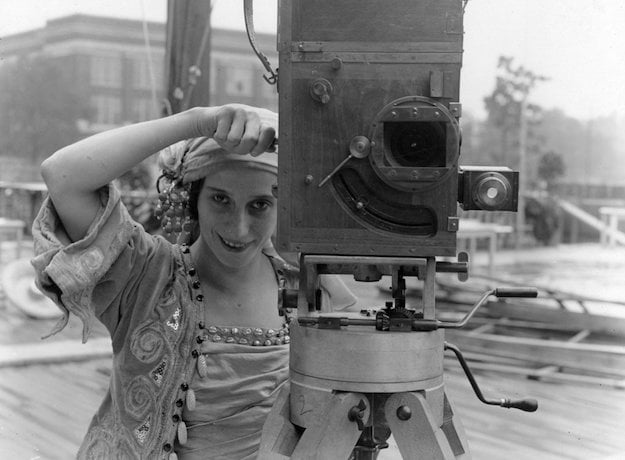
Anna Pavlova on the set
It was the biggest production Universal had ever attempted, led by its highest-paid director and starring the world’s most famous ballerina. Shot in 1915 and released on a staggered schedule over the next two years, The Dumb Girl of Portici was the studio’s answer to rival epics like Intolerance and Civilization.
Based on an 1829 opera by D.F.E. Auber, The Dumb Girl of Portici placed poor, mute heroine Fenella in the middle of a revolt by Italian peasants against their Spanish rulers. When Fenella is seduced by Alphonso, a betrothed aristocrat, her brother Masaniello unites his fellow peasants against their cruel overlords. An early performance of the opera in Belgium reportedly helped spark a revolution there against the Dutch. Anna Pavlova, touring North America with a troupe that at times numbered 200, performed Fenella regularly in repertory along with pieces by Bizet, Verdi, Ponichelli, and others. Facing ruinous debt in the midst of her tour, the Russian dancer signed a contract with Carl Laemmle at Universal that promised her 50 percent of the profits to star in what would be her only feature film.
Filmmaker Lois Weber, herself in debt, had also signed with Laemmle, returning to the studio after working with actor and independent producer Hobart Bosworth. Weber started out in movies in 1910 with Edwin S. Porter of Edison and Great Train Robbery fame. She and her husband Phillips Smalley wrote, directed, produced, and acted in scores of one- and two-reel shorts. A technical innovator, Weber experimented with split-screens, double exposures, and synchronized sound, and was fully capable of not just operating a camera but developing, editing, and printing film. With a background in music and evangelism, she developed an identifiable tone and pacing in her work, with a strongly moralistic outlook and an appetite for uplift.
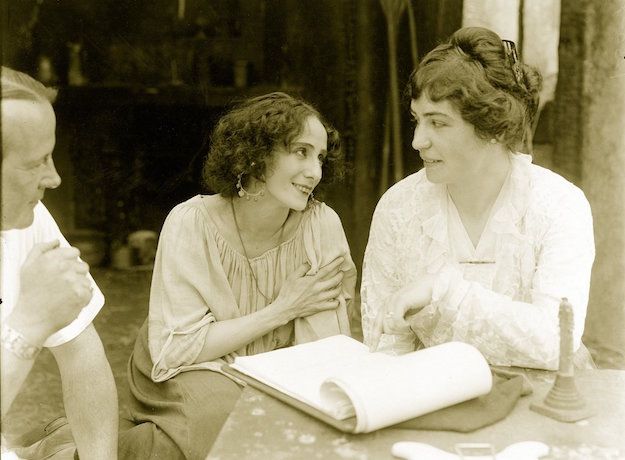
Anna Pavlova and Lois Weber on the set
“I like to direct because I believe a woman, more or less intuitively, brings out many of the emotions that are rarely expressed on the screen,” the director said in a Motion Picture Magazine article quoted in biographer Shelley Stamp’s Lois Weber in Early Hollywood. “I may miss what some of the men get, but I will get other effects that they never thought of.”
Weber was not the only female director at Universal—Ida May Park, Grace Cunard, Cleo Madison, Ruth Stonehouse, Elsie Jane Wilson, Ruth Ann Baldwin, and Lule Warrenton were also on the payroll—but she was the most famous. In fact, publicity ads in the mid-1910s positioned her as one of the industry’s three top directors, alongside D.W. Griffith and Cecil B. De Mille. Like many early filmmakers, she made almost every kind of movie: stories about drugs, prostitution, kidnapping, adultery, murder, romance, from the Western frontier to the waterfront. But The Dumb Girl of Portici was a different kind of challenge, an attempt to portray grand opera with silent-film techniques. What’s more, Weber was working with a dancer who had never appeared in movies before, shooting around a schedule that sometimes left Pavlova free for only an hour or two a day.
The 10-week production was split between Chicago, where shooting took place at an old amusement park and the Palace of Fine Arts, and Universal City in Los Angeles. Along with Pavlova, the cast included Rupert Julian (who went on to direct the 1925 Phantom of the Opera with Lon Chaney), Jack Hoxie, and Jack Holt, soon to be a fixture in Columbia’s action films and later a Western star. At the end of 1915, Universal screened an 11-reel version in Chicago, New York, and Los Angeles. Two reels were cut before the film’s official release in 1917; according to George Willeman at the Library of Congress, that material is most likely gone forever.
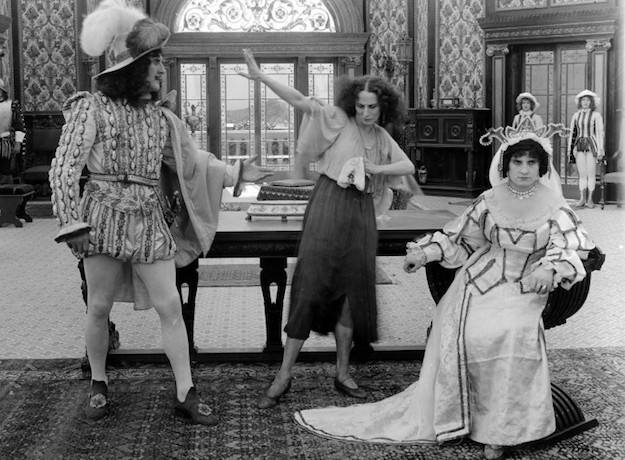
The Dumb Girl of Portici
Barring some positive reviews, overall response to The Dumb Girl of Portici was muted. Critics expressed disappointment with Pavlova, who was “not quite camera broken” in Variety’s opinion. (Despite the response, the dancer remained interested in the medium and shot her own 9.5mm home movies.) Yet the film’s poor showing at the box office had little effect on Weber’s career at the time. She was in the midst of a startling creative outburst that included controversial hits like Hypocrites, the anti-abortion Where Are My Children?, and Shoes, a bleak look at a poverty-stricken shopgirl who turns to prostitution (also the subject of a recent restoration).
The Dumb Girl of Portici differs from Weber’s other films, which tend to take a smaller-scale, more intimate approach. As Stamp put it in an e-mail: “Weber made her name with a series of features on topical and highly contentious social issues, including poverty, addiction, religious bigotry, sexual assault, the campaign to abolish the death penalty, and the fight to legalize contraception.” Here Weber appropriates the styles of recently imported Italian epics like Cabiria and Quo Vadis, with their massive sets, scores of extras, and outsized storylines, but in a style that felt closer, more personal than what her peers were doing.
“Her use of the mobile camera, especially her tracking shots, is truly exceptional while being organic within the film. I think they were more sophisticated than any other use of it at that time and perhaps not bettered until the German cinema of the 1920s. They create a tremendous kinetic energy without being showy,” co-founder of Milestone Film & Video Dennis Doros said in an email.
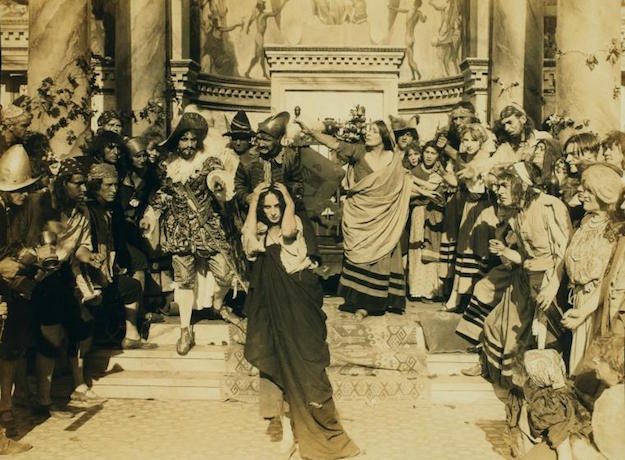
The Dumb Girl of Portici
Cinematographer Billy Bitzer famously mounted his camera onto an elevator to show off the vast Babylonian sets built for Intolerance—a shot that evokes awe at the scope of Griffith’s vision but on a narrative level chiefly conveys that the Babylonians had a lot of money to spend on architecture. For The Dumb Girl of Portici, Weber had her cinematographers (who included frequent collaborators Dal Clawson, Allen G. Siegler, and R.W. Walter) track through elaborate sets to make specific points about her characters. When a “licentious” aristocrat lurches along a banquet table, then staggers out onto the floor, the camera pulls back as in disbelief before him. Weber also put cameras on moving carriages, capturing startlingly modern close-ups of the faces of royalty responding to onlookers along a parade route. She used overhead shots, pulled in close on Pavlova as she dissolves into despair in a dungeon, and used surprising angles to convey a mob’s energy during a riot.
The director was especially careful with Pavlova when it came to rendering the dancer’s sense of movement. The Dumb Girl of Portici forgoes the static camera setups popular at the time in order to follow Pavlova as she strides through sets, panning back and forth to keep her in frame. Viewers today might find her acting too broad, but each gesture and movement in her performance is not only psychologically astute but disarmingly graceful. Pavlova is after all a dancer appearing in a grand opera, although she sought out advice from her fellow performers and toned down her work after seeing her rushes.
It’s risky to make broad artistic claims based on gender, but the fact remains that Weber’s movies don’t look like those directed by her male colleagues. And throughout her career she made creative choices that ran counter to prevailing ideas about and depictions of women in the industry. For example, the heroine of Shoes defies her family’s sense of morality. If she ultimately pays a price, she at least took control of her life. Serials like The Exploits of Elaine or The Hazards of Helen praised women for being as good as men as they drove cars, piloted boats, operated radios. Griffith cossetted his heroines in sentimental melodramas: they could show spunk and ingenuity, but still needed men to rescue them.
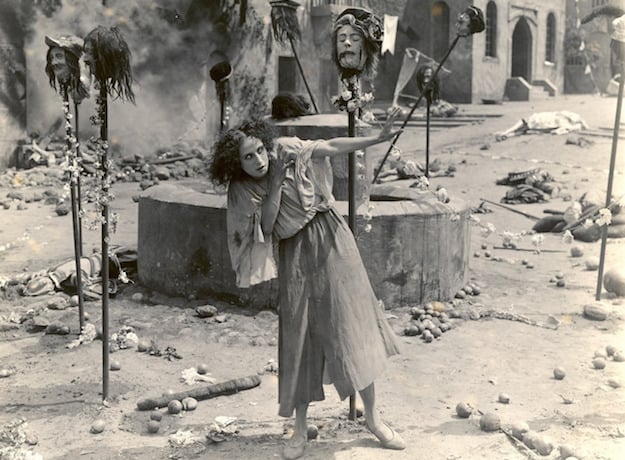
The Dumb Girl of Portici
Weber’s women were different. They made their own choices, accepted the consequences of their actions, didn’t wait for men to tell them what to do. In The Dumb Girl of Portici, Weber was limited to some extent by her source material, but she still adjusted the original opera to focus almost entirely on Fenella. She also took the time to explore the thoughts and motives of Alphonso’s fiancée, the Viceroy’s wife, and an unjustly imprisoned mother whose infant is dashed to death before her eyes. These are the figures who take charge of the story—the men are there to screw things up and fight each other. Daringly, in her love scene with Alphonso, Weber focuses on Fenella’s pleasure, on her response to his embrace.
With The Dumb Girl of Portici Weber also established a template that Universal would return to again and again in films like The Hunchback of Notre Dame and Julian’s The Phantom of the Opera. Despite the film’s middling success, Weber retained her fame and box-office clout for several years while setting up her own production company and working for other studios like Paramount. She did not fare well in the 1920s, however, as the industry fell prey to studio agglomeration and Lois Weber Productions struggled in the independent market.
Griffith also had trouble adjusting to a new Jazz Age generation of flappers and speakeasies, but Doros sees a difference between Griffith and Weber: “Griffith’s Victorian sensibility and storytelling fell out of favor with 1920s viewers, but I think Lois’s sensibilities were more attuned to Jacob Riis and Upton Sinclair, the desire to focus on society’s failings—an approach that became popular again during the Depression in pre-Code dramas that focused on social issues.” Stamp argues more pointedly that Weber’s interests were out of step with Jazz Age culture.
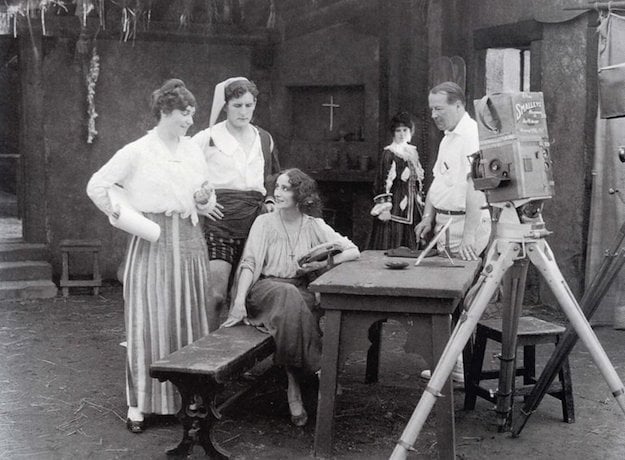
Anna Pavlova and Lois Weber on the set
“There’s also no question that Weber’s feminist critique of Hollywood—onscreen and off—played a role in her dwindling success,” Stamp said in an email. “She lost her distribution contract with Paramount, for instance, when they refused to distribute her film What Do Men Want?, a visceral critique of masculinity and commodity culture which features the public suicide of a young pregnant woman spurned by her male lover. She spoke openly about her desire to create new screen heroines who countered the era’s flappers, three-dimensional women with brains and character, not the ‘over-dressed Christmas trees’ she saw onscreen.”
Weber came to prominence when movies were evolving from broad entertainment for predominantly lower-class viewers to prestige productions for audiences with higher expectations. By foregrounding artistic technique and expanding opportunities for female characters, she played an important role in that shift. But Weber had more trouble adjusting to changes in her audience’s tastes. Her movies dealt with social issues and usually reached tidy, moralistic conclusions. Birth control is good. Poverty is bad. Stars like Mary Pickford, writers like Frances Marion, directors like Maurice Tourneur, Frank Borzage, and Ernst Lubitsch didn’t necessarily offer lessons at the end of their movies. They switched from lectures to romance, fantasy. The lovers in Seventh Heaven are just as poor as the shop girl in Shoes, but for Borzage, love conquers all, even death.
Even worse for Weber’s interests were filmmakers like De Mille, consumed by spectacle, finding ways to condemn evil while leering over its many permutations. But the most telling blow against Weber’s style of filmmaking may have come from the comedians. In movies like Easy Street and The Kid, Charlie Chaplin showed a better grasp of how the poor actually lived than Weber. In shorts like Our Relations, Buster Keaton mocked the settings of a film like Shoes, presenting starving Irish immigrants who were just as fickle and unreliable as the wealthy.
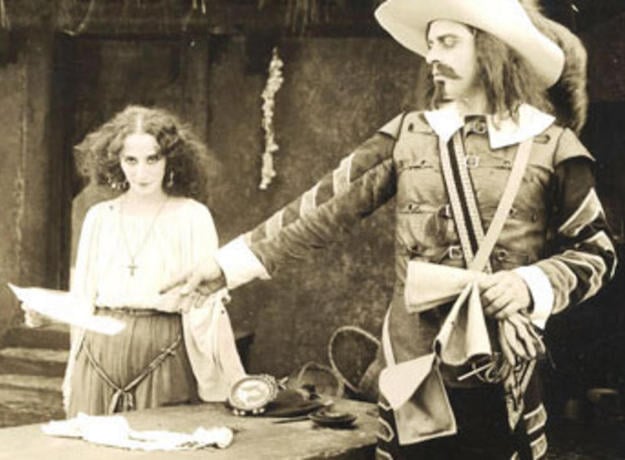
The Dumb Girl of Portici
According to Stamp, Weber was “shockingly unknown” by the 1930s. (Doros believes that Weber’s health affected her output.) Her only sound film, White Heat, was filmed on location on Kauai in 1934. She died five years later. Critics and historians had already begun erasing her presence. “Major books by Terry Ramsaye, Benjamin Hampton, and Lewis Jacobs only chronicle the careers of female stars,” Stamp observed, “ignoring the careers of female screenwriters or directors” and making her career “a notorious blind spot in American film history.” With the new restorations of The Dumb Girl of Portici and Shoes, that notoriety will likely be banished in favor of fresh appreciation for this overlooked filmmaker’s actual accomplishments.
The Dumb Girl of Portici was restored by the Library of Congress, An Affair with Film and Milestone. EYE and Milestone restored Shoes.
Daniel Eagan is a critic and film historian living in New York City. He is currently working on the third volume of America’s Film Legacy, a survey of the National Film Registry.







